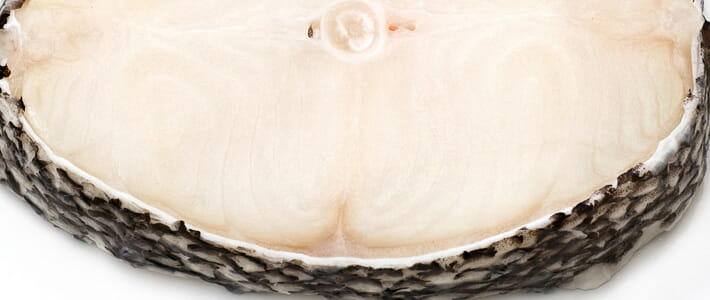Catfish
scientific name:Ictalurus punctatus

Catfish are characterized by a deeply forked tail and spotted sides; this species has eight barbels and black-tipped fins. Cooked meat is ivory colored.
Product pdf for download-
3.5 oz (100g) raw edible portion.
-
Calories 163
-
Calories from Fat 93
-
Total Fat 10.5g
-
Saturated Fat 2g
-
Cholesterol 58mg
-
Sodium 47mg
-
Carbohydrates 0g
-
Protein 20g
-
Potassium 268mg
Interesting Fact
Catfish most likely got its name from the whisker-like barbels on its face. Catfish use these barbels to feel around murky water. The barbels also contain taste buds allowing the catfish to taste its food. They also have spines that run down their fins that can puncture skin and inject a venom that can cause pain and swelling.
Alternatives
Tilapia and Lake Victoria Perch are great substitutes for catfish.
Source
Most farm-raised catfish are raised in the Mississippi Delta, but there are also catfish farms in Louisiana, Texas, California, Idaho, Alabama, and Florida. We use multiple sources for catfish to always ensure the freshest possible filet cuts. As a leading catfish wholesale seafood supplier, we do our best to ensure that we have a good stock of this popular fish. Call and place your order whenever you’re ready.
Harvest Method
Catfish are typically harvest using purse seines.
Harvest Season
Typically catfish are available year-round.
Flavor
Catfish has a mild and delicate flavor.
Texture
The texture of catfish is firm and slightly flaky.
Preparation
Catfish is best baked, broiled, stewed, sautéed, grilled, fried, poached, smoked, and steamed.
Quality Control
Catfish should be wrapped in plastic and surrounded with ice to insure the temperature control.
Other Information
Known as one of the most quality-controlled products in the food industry, catfish are grain-fed in order to produce standard, soft-textured, mild tasting meat.
Market Segments
Catfish is appropriate for fast food and casual dining.